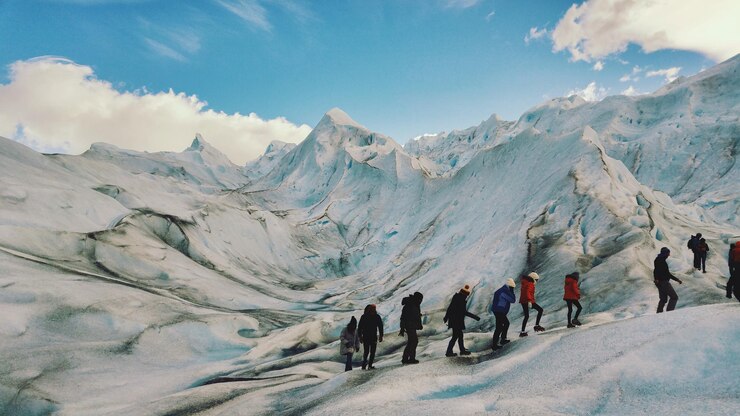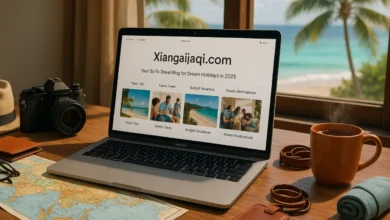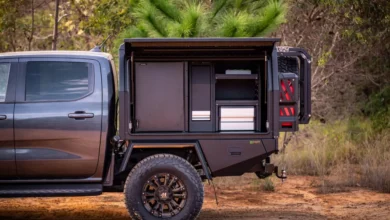Is Luxury Trekking the Future of Nepal’s Himalayas?

For decades, trekking in Nepal has been defined by simplicity: shared rooms in teahouses, basic dal bhat meals, cold showers, and the rustic charm of life on the trail. This bare-bones style of adventure was celebrated for its authenticity. But times are changing. Increasingly, trekkers are asking a new question: Why suffer when comfort is possible—even in the Himalayas?
This question has given rise to a growing trend: luxury trekking. It’s no longer a novelty reserved for diplomats or celebrities. It’s gradually becoming a new standard for many visitors—and even some Nepalis.
So, is luxury trekking just a fleeting trend? Or is it the future of Himalayan tourism in Nepal? This article explores the emerging shift, what it means for traditional trekking, and how it impacts local communities.
1. What Does Luxury Trekking Actually Mean?
Luxury trekking in Nepal still involves walking the trails, but it upgrades nearly every other aspect of the experience.
Some common features include:
- Comfortable lodges with attached bathrooms, hot water, and heated rooms
- Diverse meals including continental, organic, and even gourmet cuisine
- Professionally trained guides, porters, and medical backup
- Amenities such as Wi-Fi, electric blankets, and oxygen cylinders
- Helicopter options for return trips or medical emergencies
Luxury trekking doesn’t remove the mountain—it just softens the hardship. And that’s the appeal for a rising class of tourists who want a safe, enjoyable, and memorable experience without compromising on comfort.
2. Why Is Luxury Trekking Gaining Momentum?
Changing Demographics of Trekkers
The average trekker today is no longer just a young backpacker. Increasingly, trekkers are in their 40s, 50s, or even 60s. They still crave adventure, but prefer it with comfort. Many also travel with spouses or children and want an experience that feels safe, private, and accessible.
Rise of the Domestic Market
Nepal’s own middle and upper-middle class is growing. Kathmandu-based professionals, entrepreneurs, and even civil servants are now choosing quality over cost. They no longer see trekking as only a foreigner’s pursuit. They want to enjoy their own country in style—and are willing to pay for it.
Time-Efficient Travel
Modern lifestyles are busy. Many travelers don’t have three weeks to dedicate to a single trek. Luxury trekking offers shorter, fly-in-fly-out options where the highlights are packed into just a few days, without sacrificing comfort or views.
3. Impacts on Local Tourism and Economy
Luxury trekking has the potential to significantly boost local incomes and improve living standards in remote mountain communities.
Instead of serving large numbers of budget trekkers, communities can earn more by hosting fewer, higher-paying guests. This could reduce overcrowding on trails, ease the environmental burden, and encourage investment in infrastructure like solar panels, clean water systems, and waste management.
However, this comes with responsibilities:
- Local businesses must be trained and equipped to meet higher standards.
- Wages and working conditions for porters and guides must improve in parallel.
- Lodges must avoid turning authentic villages into tourist bubbles, disconnected from local culture.
Luxury trekking can be a powerful force for community development, but only if it is planned with fairness and sustainability in mind.
4. Does This Mean Budget Trekking Is Over?
Not at all. Budget trekking continues to thrive, especially among:
- Solo travelers
- Students and backpackers
- Adventurers who seek the raw, minimalist experience
In fact, budget and luxury trekking are now coexisting as two sides of the same mountain. This kind of segmentation is good for the industry because it gives travelers real choices—based on their physical ability, preferences, and budgets.
Some even combine the two: trekking in a traditional way for part of the trip and enjoying a luxury lodge stay at key points, such as in Ghandruk or Namche Bazaar.
5. What Does Luxury Trekking Look Like in Practice?
Everest Region
In the Everest region, operators like Yeti Mountain Home and Everest Summit Lodges offer premium trekking experiences. Lodges have heated rooms, attached bathrooms, plush bedding, and multi-course meals. These are popular on routes like the Everest Panorama Trek or Luxury Everest Base Camp Trek.
Some packages include a helicopter return from Kala Patthar, allowing trekkers to avoid the long descent and still enjoy the full trail experience.
Annapurna Region
The Annapurna region is catching up fast. Areas like Ghandruk, Landruk, Dhampus, and Majgaon now have upscale lodges serving Italian, Chinese, and Nepali cuisine. The Annapurna Luxury Lodge Trek has become popular for both foreign tourists and domestic travelers, particularly couples and families.
Expanding to New Trails
Luxury trekking is also entering newer routes like Mardi Himal, Mohare Danda, and Upper Mustang. Some eco-lodges are focusing on luxury blended with sustainable practices, including organic farming, solar heating, and low-plastic usage.
6. Concerns About Overdevelopment and Authenticity
Luxury trekking brings risks if not managed carefully. These include:
- Over-commercialization of trails
- Loss of cultural authenticity
- Increased inequality between communities with luxury facilities and those without
There’s also the question of experience dilution. One of the reasons people come to trek in Nepal is to connect with nature and simplicity. If that experience is overly padded with luxury, we may lose what makes trekking in Nepal so unique.
Therefore, trekkers and tourism operators must balance comfort with humility. True luxury is not just in hot showers and gourmet meals—it’s in responsible travel that respects the land, the culture, and the people who make the journey possible.
7. Should You Consider a Luxury Trek?
Luxury trekking isn’t for everyone, but it can be a great choice if you:
- Are traveling with family, elderly members, or children
- Want a safer and more comfortable trek
- Have limited time but want to make the most of it
- Appreciate quality service and local hospitality
For first-time trekkers, luxury trekking offers an accessible and less intimidating introduction to the Himalayas. And for repeat trekkers, it can offer a different kind of experience, focusing more on relaxation, culture, and scenic comfort.
Conclusion: The Trail Ahead
Luxury trekking is not a threat to the soul of Himalayan travel—it is part of its evolution. Nepal’s trekking landscape is expanding to accommodate different types of travelers, and that’s a good thing.
However, it must be developed with integrity. This means:
- Involving local communities in planning
- Ensuring fair wages for staff
- Keeping sustainability and authenticity at the center
Nepal has a rare opportunity to lead the world in responsible luxury trekking—where comfort does not come at the cost of culture, nature, or dignity.
The future of Nepal’s Himalayas is not just in who walks the trails, but in how they walk them. Whether you sleep in a stone teahouse or a heated suite, the mountain remains the same. And it demands the same respect.




